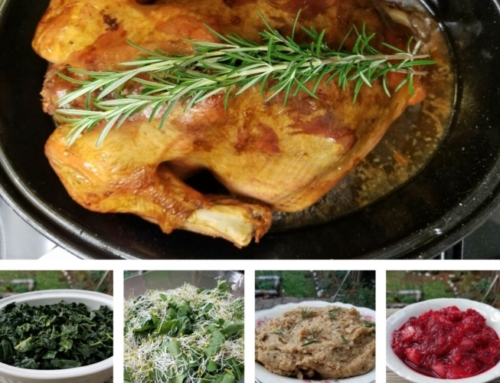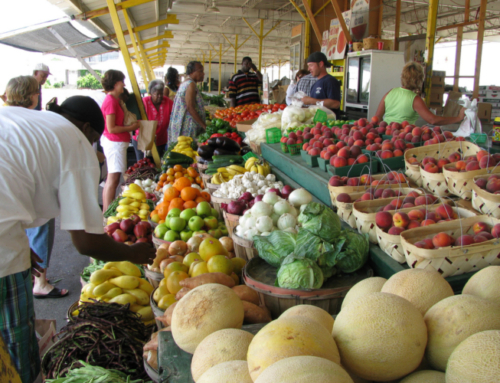Eating healthy and eating well does not have to cost a fortune; you can eat well on a budget! It just takes some planning and forethought. Here I share some of my tried and true tips the same way I break it down for myself and my clients.
What Are Your Staples?
First off, decide what your staples will be. Of course you want to base your decisions on the nutrient value available from the foods you choose. Choosing nutrient dense foods is key to making a small budget work. It also helps to know what is available locally and what you might need to order. Make a list of all the items you think are of primary importance and their cost. Total up that column. If your budget does not allow for all of it, pick the items most essential to you, your family and everyone’s health. You can also alternate certain items from week to week. As an example, my staples are pasture eggs, raw goat milk, unpasteurized sauerkraut, water kefir, coconut oil, grass-fed butter, sprouts/microgreens, chicken liver and bones. The majority of my budget goes to the eggs, raw goat milk and sauerkraut. The bones are inexpensive; even though my local Whole Foods pre packs their bones, I often go the counter and ask them if they have any not packaged in the back and that way I get the exact amount of the types of bones I want and can mix and match. Chicken liver is the only liver I can find in my area at the moment and it is very reasonably priced. Don’t skimp on quality, decide what you must have after you have totaled up your column and save the rest for special treats, sales, occasional foods. I make my own water kefir and sprouts to keep costs down and an unlimited supply for me to enjoy. For you, raw milk might not be an option available or desired but real pasture raised meat on the other hand is.
Add Ons
Next to your staples comes the addition of whatever local seasonal varieties of vegetables are available to you. Don’t let the term “add ons” fool you, the vegetables are actually vital and the foundation of your meals with both raw and cooked combined. I separate staples and add ons as such because this category usually costs much less. Each week allot a specific amount for local, seasonal produce. Now if you make your own sauerkraut and fermented veggies they would go into this category since making your own brings down the cost dramatically. I do recommend making your own by the way. I include fresh herbs in this category as well when my garden supply gets low.
Condiments, Seasonings And Superfoods
You have your staples and add ons now leaving condiments and seasonings. Many of these are best homemade such as traditionally fermented ketchup, salsas, hot sauce, mayonnaise and so on. I get fabulous traditional miso from South River Miso. It pays to buy good quality oils such as olive, coconut, sesame. Besides apple cider vinegar, I like to have a good quality well aged balsamic vinegar on hand too. Superfoods go into this category as well since a little goes a long way and need only be replaced periodically. Set a monthly or weekly amount for this category, depending on your needs and what works for you.
Budget Friendly Ideas
Especially with the onslaught of cold weather in many climates at this time year soup becomes a staple. Always having bone broth on hand is a great economical way to add tons of extra nutrients to your daily intake. Use it by itself as a clear broth base, add sauteed vegetables, small pieces of meat (optional), kelp noodles and garnish with cilantro or basil and some mung bean, pea shoots, daikon radish sprouts or microgreens and a drizzle of sesame oil. Serve with some kimchi or lacto fermented veggies and a piece of cheese on the side. Make a vegetable soup from roasted veggies and/or squash, use the bone broth in place of water. I like to roast or saute base veggies first, then put them in a high speed blender along with bone broth, a spoonful of unpasteurized miso, dulse flakes, fresh herbs and/or spices, some fermented and soaked nuts or seeds, sprouts, microgreens and blend to warm. Serve with a true sourdough or other fermented based bread, sauerkraut and plenty of grass-fed butter. When scrambling, steaming or baking eggs, add a touch of bone broth instead of water. Use your imagination, the possibilities are endless.
Nutrient Density
When the body gets the nutrients it needs then it requires less food to make it happy. By keeping the nutrient level high on the majority of foods you can keep you food costs down and your body healthy and strong. By using veggies and broth as a base to your meals you are keeping costs down and your protein and fats as the “sides”, the items that usually cost more, you can eat extremely well on a low budget. Many individuals often make the mistake of thinking they need to use grains and breads and such to “fill up” and keep their budgets down. Unfortunately using these types of complex carbohydrates to “fill up” is a sure fire way to keep your body hungry and calling for more and more food on a regular basis as it is crying out for the deeper nutrients it needs to function. Don’t fall into that trap; it will lead you down the path of spending more and more money, possibly gaining weight and weakening your immune system. They have their place but should not be used as the foundation of your meals.
Keep in mind your needs will change with the seasons as well and should be reexamined with each seasonal shift. These are just some tips for eating healthy on a budget and I hope you have gained some gems from this that you can support yourself with. In my book, “Live Vibrantly! 10 Steps to Maintain Youthfulness, Increase Energy and Restore Your Health” I go deeper and into more detail. Get your copy and your bonuses here!
Live Vibrantly!









